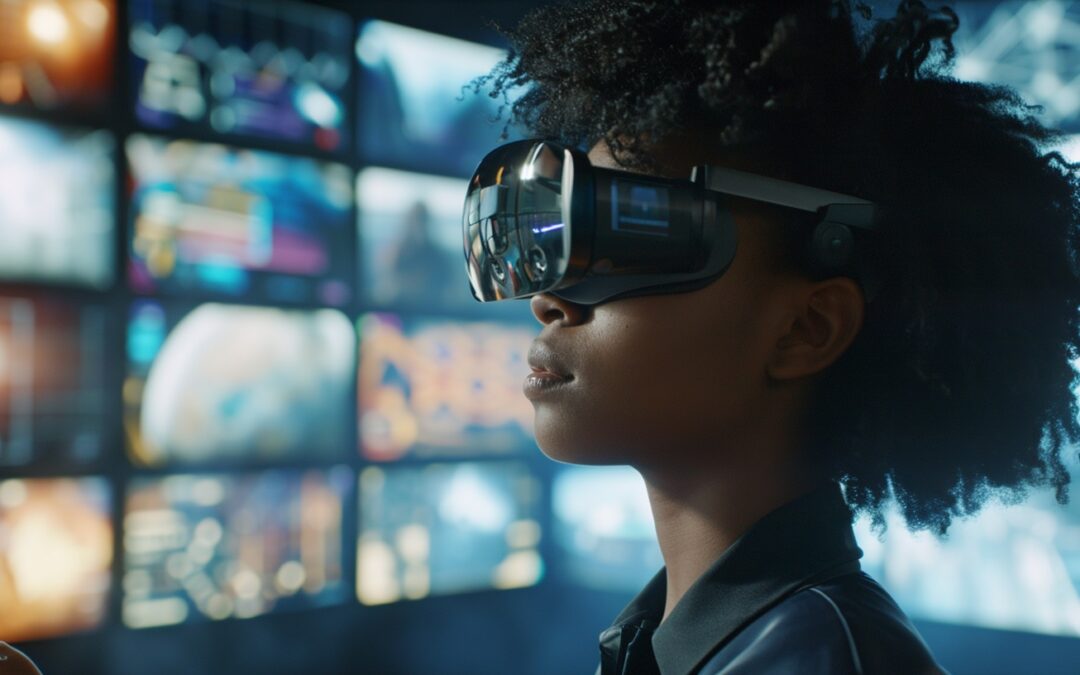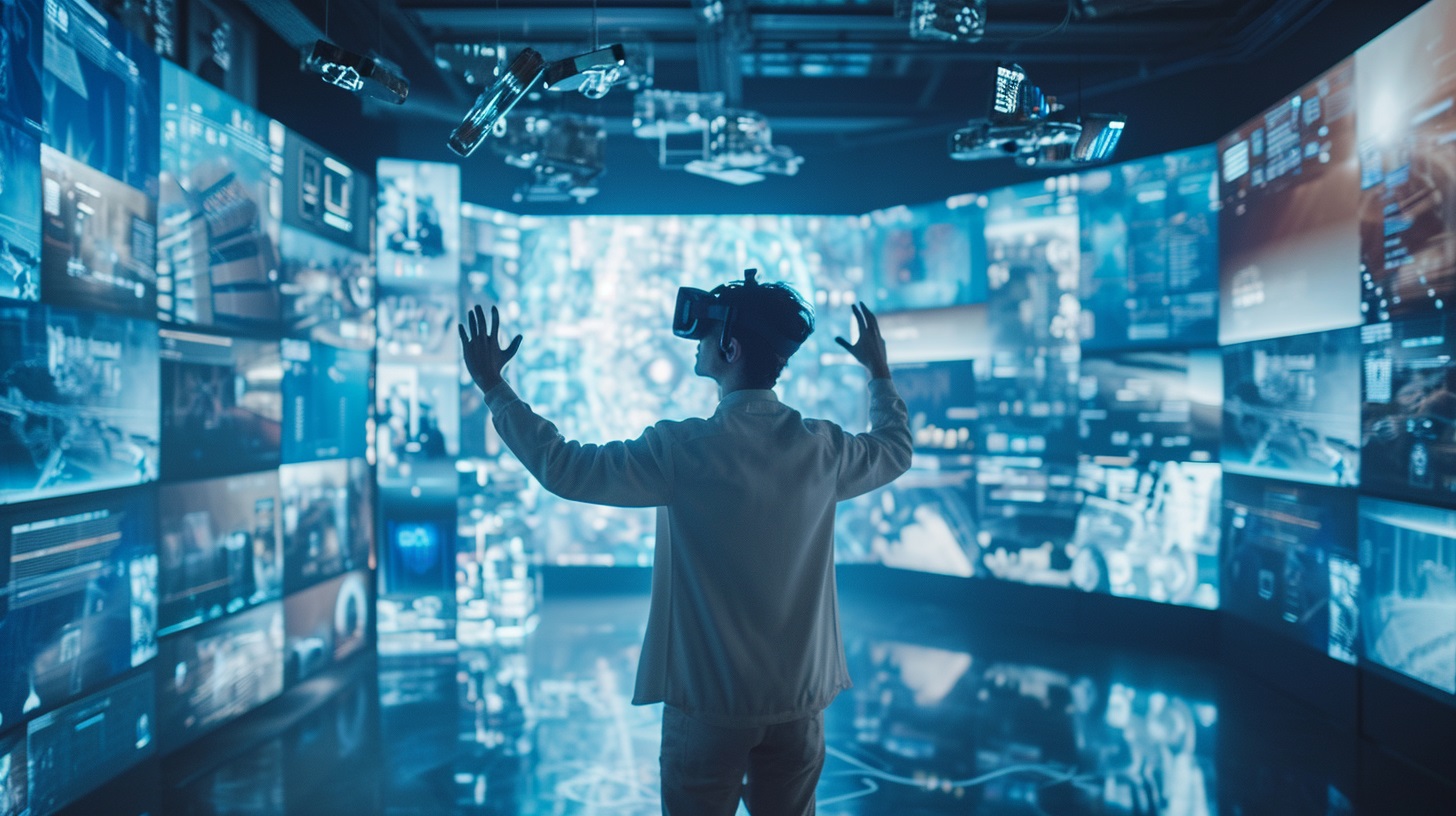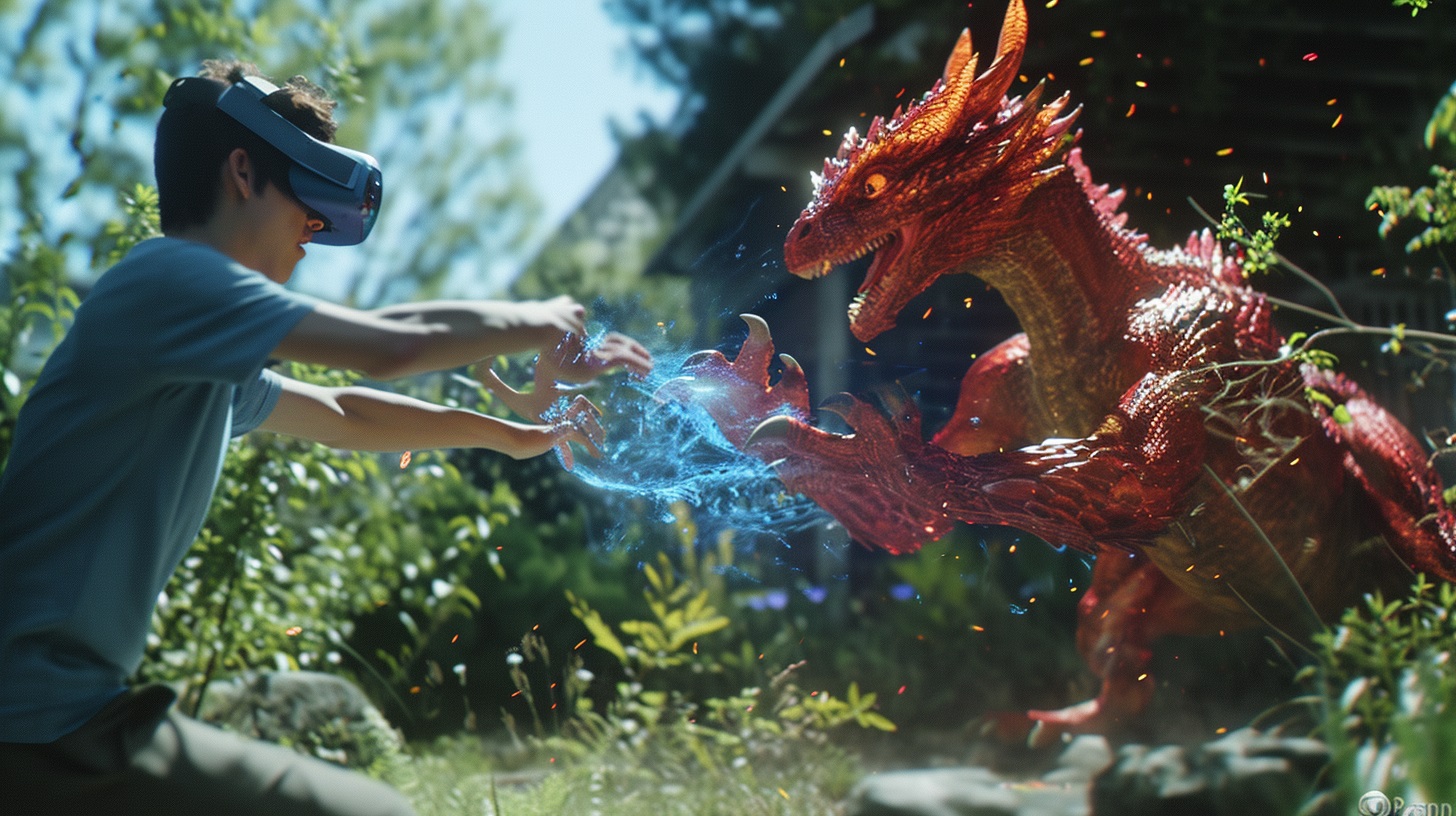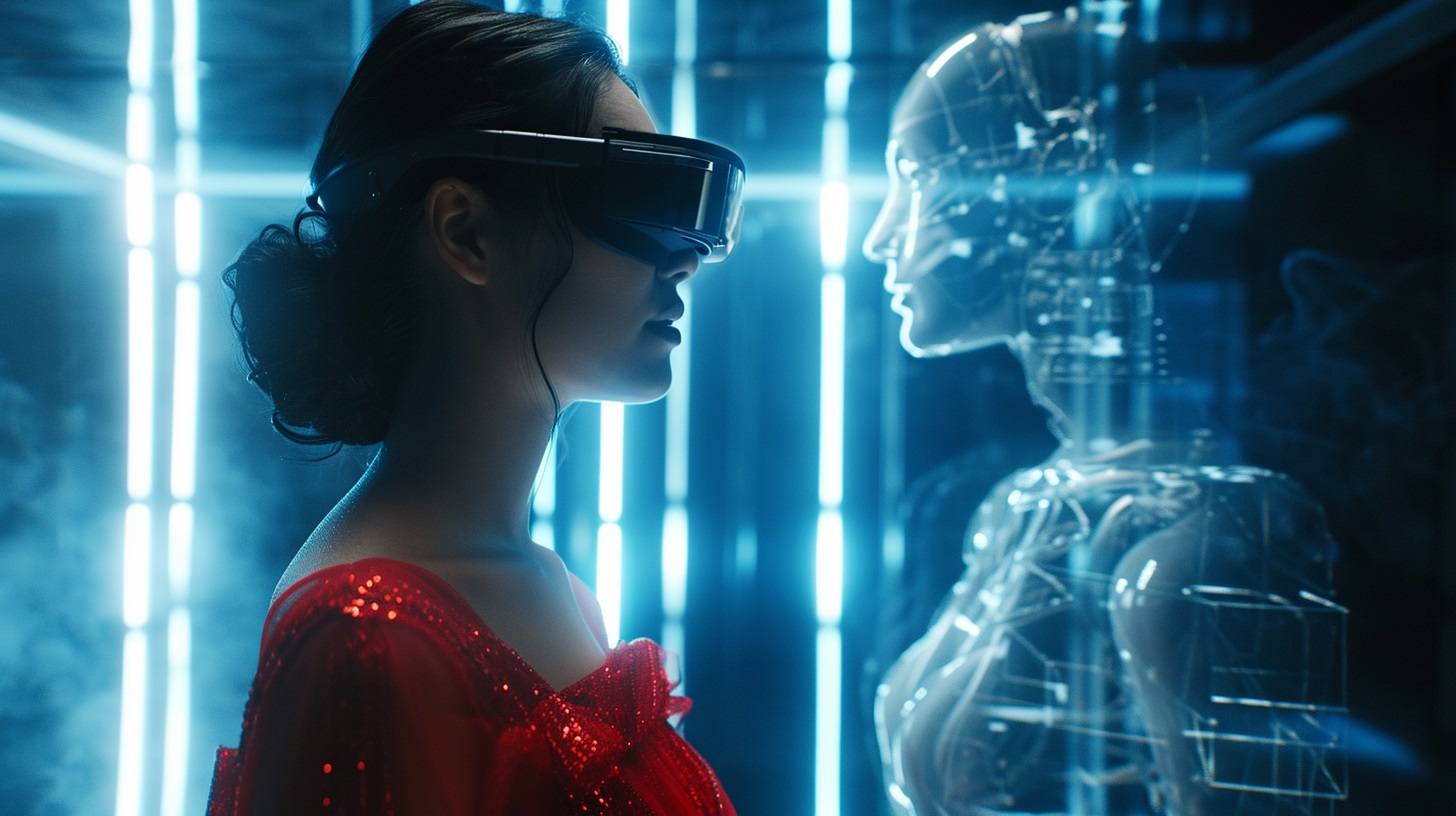The year 2023 emerged as a pivotal point for AI and XR technologies, igniting transformative changes across a multitude of sectors and revolutionizing how users engage with digital environments. The widespread embrace of AI tools such as ChatGPT, Stable Diffusion, and Midjourney has redefined creativity and complex problem-solving. This surge in AI and XR technologies mirrors the profound societal and economic transformations witnessed during the Industrial Revolution.
In the realm of XR—spanning Augmented Reality (AR), Virtual Reality (VR), and Mixed Reality (MR)—2023 saw groundbreaking advancements, especially in hardware. The launch of Apple’s VisionPro headset is poised to revolutionize consumer and enterprise markets with its state-of-the-art capabilities. Additionally, the concept of “Spatial Computing” has emerged, signifying a shift towards a new era of computing.
Here’s a look at some of the top XR technology trends for 2024 that are expected to redefine the digital landscape:
1) Spatial Computing: The Next Frontier?
In 2024, Spatial Computing is not just emerging; it’s fundamentally redefining how we interact with our environment. This multifaceted paradigm, championed by tech giants like Apple, Meta, Microsoft, AWS, and Magic Leap, intricately weaves together AI, Computer Vision, and Extended Reality, creating a seamless interface between our digital and physical worlds. It’s revolutionizing fields beyond tech, from healthcare, where it aids surgeons in complex procedures, to urban planning, offering interactive, data-rich city designs. This transformative technology is reshaping industries by enabling immersive, intuitive 3D interactions and empowering businesses to create more engaging, efficient, and personalized user experiences. The ascendancy of Spatial Computing promises to unlock new possibilities, warranting a dedicated exploration in the tech discourse.
2) Wearable XR Advancements:
As 2024 unfolds, the XR wearables market is set to redefine human-tech interaction on an unprecedented scale. Devices such as Meta Quest 3 and Apple’s Vision Pro are not just transforming gaming; they’re revolutionizing sectors like mental health, where VR therapy provides groundbreaking treatments, and education, where immersive learning experiences are reshaping how we acquire knowledge and skills. In professional settings, these wearables are evolving into vital tools, offering real-time data overlays and context-aware insights that enhance decision-making in fields ranging from healthcare to engineering. As these devices become more integrated into our daily lives, they promise to bring about a new era of connectivity, productivity, and immersive entertainment.
3) Mixed Reality Applications and Games
The expansion of Mixed Reality content in 2024 is poised to redefine the boundaries of digital interaction. This burgeoning sector, fueled by devices like Meta Quest 3 and Apple Vision Pro, is making Mixed Reality experiences more accessible and immersive than ever. From revolutionizing tourism with virtual explorations to transforming sports with immersive live-action experiences, Mixed Reality is providing a platform for innovation. Developers are leveraging AI to create dynamic, context-aware applications that understand and adapt to user preferences, offering a level of personalization and interactivity previously unattainable. As Mixed Reality matures, it promises to enrich our lives with experiences that seamlessly blend the physical and digital worlds, offering a canvas for creativity, exploration, and connection.
4) New methods in 3D Content Creation
The domain of 3D content creation is witnessing a profound transformation in 2024, propelled by the advancements in Generative AI. This evolution is not confined to visual enhancements; it’s revolutionizing industries. In e-commerce, 3D product visualizations are redefining consumer shopping experiences, offering a level of interaction and realism that elevates online retail. In education, interactive 3D models are making complex concepts more accessible and engaging, fostering a more immersive learning environment. GenAI is not just simplifying the creation process; it’s ensuring that 3D models are not static but interactive, responsive, and adaptable, offering users experiences that are not just visually captivating but also intuitively interactive.
5) Immersive Web Transition in 2024: Pioneering the 3D Internet Evolution
The transition to a 3D immersive web in 2024 marks a significant milestone in the evolution of digital experiences. The advancements in web-based 3D engines and the burgeoning adoption of 3D virtual storefronts are revolutionizing the way we interact with the digital world. This shift, powered by technological leaps in WebGL and WebGPU, is enabling browsers to render complex, interactive visual experiences with unparalleled efficiency and fidelity. As the WebXR API gains traction and smartphone hardware continues to advance, we are on the cusp of an era where digital interactions are not just viewed but experienced – where users can engage with content in a more natural, intuitive, and immersive way, transforming the web into a rich, interactive 3D universe.
6) Spatial Audio and Haptics: Enhancing Immersion
The integration of spatial audio and haptic technologies in Extended Reality is set to orchestrate a sensory revolution in 2024. These advancements are enhancing digital interactions, making them more immersive, natural, and intuitive. Audio technologies such as Dolby Atmos and DTS:X, with their depth and realism, alongside the nuanced tactile feedback offered by advanced haptic systems, are redefining user engagement. Innovations like Meta’s Haptics Studio and Haptics SDK for Unity are at the forefront, enabling developers to create rich, detailed haptic experiences in VR/MR games and applications. This convergence of sophisticated spatial audio and haptic feedback is poised to transform the way we interact with digital content, ushering in a new era of immersive, natural digital experiences.
7) Hyper-Realistic Avatars and Virtual Characters
The year 2024 heralds the dawn of hyper-realistic avatars, a transformative leap forward in the realm of virtual interactions. Led by industry giants such as Meta and NVIDIA, these avatars are set to redefine virtual presence. Innovations like Meta’s Codec 2.0 avatar and NVIDIA’s Avatar Cloud Engine are enabling the creation of lifelike, interactive avatars for everyday communication and virtual environments. Advanced design tools are empowering users to craft avatars with unparalleled detail and realism, offering a level of customization and personalization that blurs the line between the virtual and the real. As hyper-realistic avatars become more integrated into our digital lives, they promise to transform social interactions, content creation, and digital marketing, offering a new medium for expression, connection, and engagement in the virtual world.
8) Location-based Augmented Reality (AR) Games and Applications
The evolution of location-based Augmented Reality in 2024 is charting a new course for interactive realities. With advancements in technologies like Visual Positioning Systems and innovative tools like Google’s ARCore Geospatial API, AR experiences are becoming more precise, contextually relevant, and engaging. This progress is enriching various sectors, from retail to entertainment, offering users a more interactive, personalized way to explore and interact with the world around them. Location-based AR is not just enhancing existing experiences; it’s creating new opportunities for engagement, education, and exploration, transforming the way we perceive and interact with our physical surroundings.
9) Virtual Reality (VR) 3D Concerts and Sport Events
The entertainment industry is on the brink of a revolution in 2024, with immersive 3D concerts and sports events redefining fan engagement. Innovations in VR platforms like AmazeVR and advancements in volumetric video technology are offering fans new ways to experience live performances and sports events. These technologies are providing unparalleled perspectives, immersive interactions, and rich, engaging content that transcend the limitations of traditional media. As these immersive experiences become more accessible and widespread, they promise to reshape the entertainment landscape, offering creators, artists, and sports organizations new mediums to connect with their audiences, create memorable experiences, and build lasting communities.
10) AI Assistants: Bridging the Physical-Digital Divide
The year 2024 is set to redefine the role of AI assistants, transitioning them from digital entities to interactive, context-aware companions within our physical world. Powered by advancements in XR technologies, these AI assistants are transcending traditional interfaces, offering real-time, interactive guidance, support, and companionship. Whether it’s enhancing shopping experiences with interactive product demonstrations, facilitating immersive virtual meetings, or creating dynamic educational experiences, AI assistants are becoming an integral part of our daily lives. As they evolve to become more proactive, intuitive, and adaptive, AI assistants are not just responding to our needs; they are anticipating them, offering tailored advice, insights, and interactions that enhance our lives in myriad ways, marking a new epoch in human-computer interaction.





